-
Membership
Membership
Anyone with an interest in the history of the built environment is welcome to join the Society of Architectural Historians -
Conferences
Conferences
SAH Annual International Conferences bring members together for scholarly exchange and networking -
Publications
Publications
Through print and digital publications, SAH documents the history of the built environment and disseminates scholarship -
Programs
Programs
SAH promotes meaningful engagement with the history of the built environment through its programs -
Jobs & Opportunities
Jobs & Opportunities
SAH provides resources, fellowships, and grants to help further your career and professional life -
Support
Support
We invite you to support the educational mission of SAH by making a gift, becoming a member, or volunteering -
About
About
SAH promotes the study, interpretation, and conservation of the built environment worldwide for the benefit of all
The Continuous Reinvention of Seoul
Sundus Al-Bayati is the 2019 recipient of the H. Allen Brooks Travelling Fellowship. All photographs are by the author, except where otherwise specified.
I have to admit that I arrived in Seoul with a bias, ready to confirm my long-held suspicions that, out of all the cities I’ve explored, Seoul is a stark example of how post-war redevelopment can completely decimate a city’s architectural and cultural identity, resulting in the generic globalist aesthetic that is infecting our cities everywhere, making them all look the same. I already knew what to expect, the reason for my being here: the much anticipated sight of the ubiquitous high-rise apartment towers that became the defining image of Seoul. I was ready to take note of what didn’t work in Seoul. I was surprised to find what works here, works very well.
When I took a taxi from Seoul Station to where I would be staying for a month, I was concerned that I made a mistake booking an accommodation at the south edge of Bukhansan Mountain, which on the map looked far from the city center. By then, I hadn't been introduced to Seoul’s efficient and extensive public transit options: the subway, buses, and taxis. It only took me 30 minutes to get from my accommodation to the city center by bus. Even as a foreigner, the mass transit system in Seoul is easy to navigate: signs and announcements are in Korean and English. The more time I spent in Seoul getting around, the more my appreciation grew for this city’s exceptional infrastructure and multimodal system of mobility. Coming from the United States, where the view of public transit is social welfare meant for the urban poor who can’t afford to own a car, is reflected in the inadequate and sometimes non-existent infrastructure for public transportation in most parts of the country, with the exception of a few big cities. Even the best the American transit system has to offer doesn’t come close to the efficiency, cleanliness, accessibility and affordability of Seoul’s mass transit. One only needs one transportation card, the T-money card, to ride everything, even taxis. Seoul’s transit even covers the so-called ‘‘First Mile/Last Mile’’ problem that affects ridership and adequate access to transit in urban centers with neighborhood buses called Maeul Buses or Village buses. These are small green buses that can accommodate 8–10 people and run in a loop within a neighborhood connecting residents to the main bus or subway lines.
Seoul looked very different half a century ago. In the span of 30 years, South Korea transformed from a war-torn and impoverished agrarian society that struggled through 35 years of Japanese colonial rule, World War II and the Korean Civil War to become one of the strongest industrial economies in the world. Seoul’s rapid industrialization, a process that took European and North American cities over a century to achieve, was condensed in a short period of time, spurring unprecedented economic growth and radical state-led urbanization. Seoul’s character today is largely the result of this period of intense modernization between 1960s and 1990s that produced a global metropolis, often referred to as the “miracle on the Han River.”
Old Seoul
To find a distinctly Korean architecture and imagine what Seoul might have looked like prior to the colonial Japanese rule and the Korean War, I started exploring the historical palaces in downtown Seoul. Traditional Korean buildings employed the same principles and architectural components for different building types: a wood frame structure topped with tiled or thatched roof. Size and level of ornamentation and detail distinguish a palace from a shrine from a house. I began in the palace complex of Changdeokgung and the Secret Garden dating back to 1412.1 Although the palace had been damaged and rebuilt multiple times, most recently after the Japanese invasion, it remains one of the most faithful examples of traditional Korean architecture and garden design from the Joseon Empire (1392–1897). There is a harmony between the palace structures and the landscape, unlike the linear and imposing form of Gyeongbokgung just to the west. Gyeongbokgung is the biggest of the Five Grand Palaces in Seoul and as an important symbol of Korean sovereignty, the Japanese leveled most of it and built the Japanese Government General Building right in front of the biggest structure of the palace, the throne hall, to intentionally block its view from the public. The building was demolished in 1996 after a controversial debate on Japanese colonial legacy in Seoul. For many, the Japanese Government General Building, which assumed official functions for the Korean Republic from the end of Japanese imperialism until 1996, was an image of Japanese subjugation of Korean heritage and culture and had to be removed to allow restoration of Gyeongbokgung.2
The Japanese systemically desecrated other palaces from the Korean Joseon Dynasty era: most of the buildings in Deoksugung were demolished and the palace grounds were converted to a park; Gyeonghuigung was destroyed and a school for Japanese citizens was built in its place; Changgyeongung was dismantled and turned into a zoo. Reconstruction of palaces destroyed by the Japanese didn’t begin until the 1990s when the government turned its attention to reviving neglected historical parts of Seoul after years of relentless urbanization projects. Pro-democracy mass protests ultimately led to South Korea’s transition to a democratically-elected government in 1987. The political movement was also critical of Seoul’s urbanism under the developmental state and conversations that were suppressed in the previous dictatorship, such as the issue of Japanese history in Seoul, began to take place.3

Figure 1 Donhwamun Gate
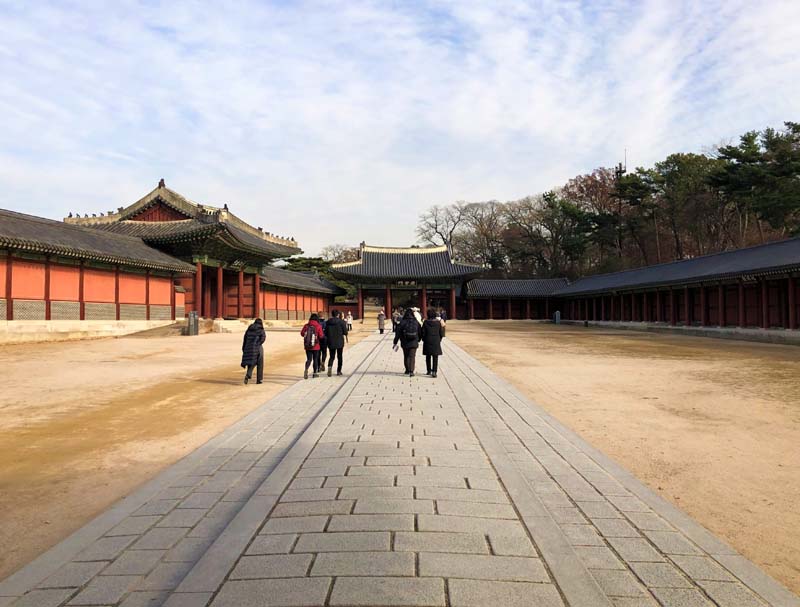



Figures 2–5 Changdeokgung Palace


Figures 6–7 Secret Garden in Changdeokgung Palace



Figures 8–10 Gyeongbokgung Palace
Across the street from Deoksugung, the debate over Japanese architectural heritage manifests physically in the old and new city hall buildings by Seoul Plaza. The old city hall, which now hosts Seoul Metropolitan Library, is a neo-classical style structure built by the Japanese in 1925. Soaring behind the old city hall in what looks like a wave that is about to crash over it, is the new futuristic all glass Seoul City Hall. The new building was part of the government’s urban renewal mega-projects of the aughts to make Seoul a global city. The city government wanted to demolish the old city hall, justifying it as a symbol of Japanese imperialism, but historic preservation committees were against it, positing that the building is an architectural and technological record of the time. In 2008, without permission or notice, the city government began demolition of the old city hall until the Cultural Heritage Committee quickly designated the building as a Historic Property and put an end to the demolition. What remained of the original building by then were only the front façade and tower.4

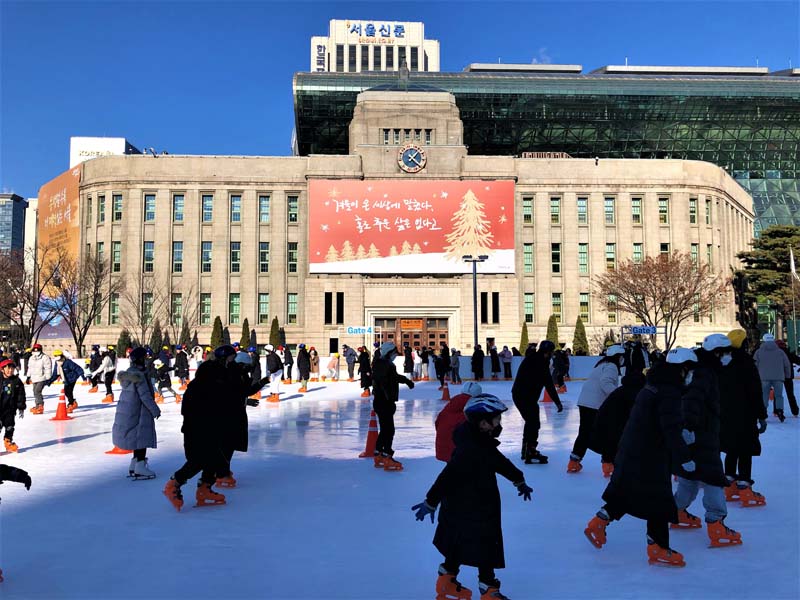
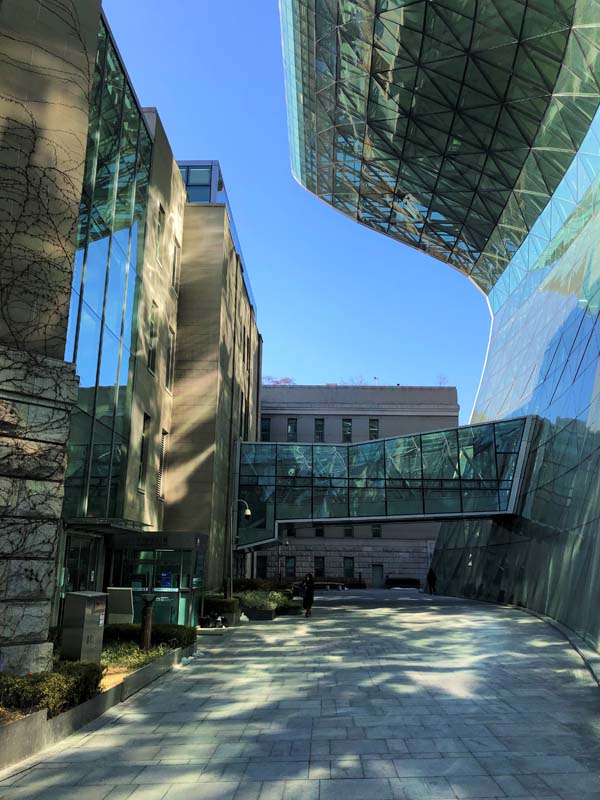

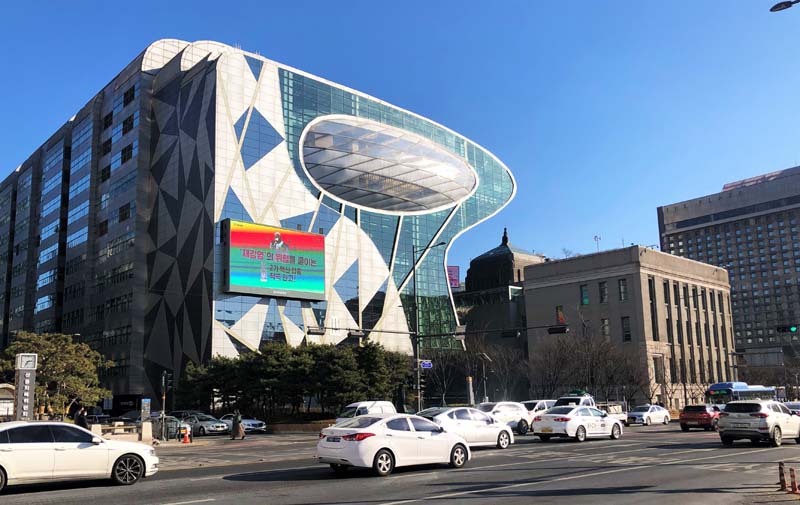
Figures 11–15 Seoul Metropolitan Library in the foreground (the old city hall building) and the new Seoul City Hall in the back
The Efficient City
Seoul’s first phase of modernization after the Korean War began in 1961 under the military dictatorship of Park Chung-hee that spearheaded South Korea’s economic miracle and turned it to an industrial powerhouse.5 The state’s obsession with accelerated industrialization at all costs drastically changed the urban character of Seoul, one that persists until today. The government’s strict and developmental program of rapid urbanization produced an efficient and a utilitarian city but largely ignored the social, historical, and environmental implications of clearing out vast areas and replacing them with new commercial and residential towers.
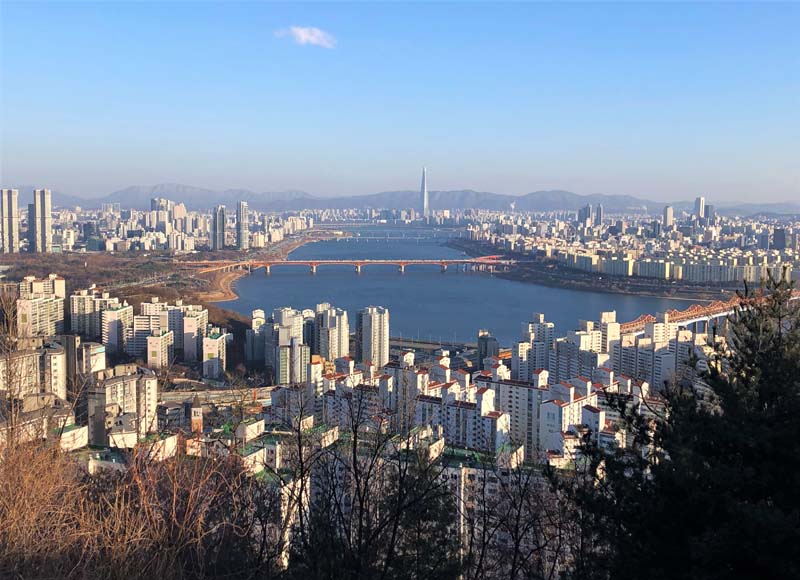
Figure 16 view of Seoul and the Han River. Lotte World Tower in the background.
For many years after the war, Seoul remained stagnant and underdeveloped in a period rendered with corruption and dependence on U.S. aid. The full force of post-war reconstruction in Seoul launched under Park Chung-hee, who propelled economic growth by empowering family-run industrial conglomerates, known as chaebols, through low-interest loans, import exemptions, and other kinds of state assistance to improve the industrial capacity of South Korea. Chaebols started out as small private family enterprises but with the state’s full support, some grew into giant corporations, like Hyundai, Samsung, and LG, that amassed power and influence over the political and economic reforms of South Korea.6 Chaebols’ power extended to the built environment through construction and real estate development that was backed by the state’s drive to produce a modern and an efficient city very quickly to reflect the success of the South Korean state to the world and especially to its rival North Korea, who had already achieved economic stability by then. Chaebols' urbanism model, facilitated by development incentives and close ties with the state, manifested in the continuous construction of apartment complexes, shopping malls, and entertainment businesses that relied on their services and products.7
After the Korean War ended, Seoul was completely devastated and poor. A growing population of returning Seoulites, North Korean refugees, and migrants from rural areas poured into Seoul and exacerbated the post-war housing shortage leading to the formation of shantytowns and slums all around the city. The apartment towers that came to define the image of Seoul first started rising in central areas, replacing shantytowns that dominated Seoul’s landscape in an effort to address the housing shortage and improve the image of the city.8 The urban poor that lived in these settlements were evicted and pushed out of the city center to make room for new developments. One infamous example is the Cheonggye Stream where migrants settled in makeshift homes along its banks until the government cleared them out in 1958 and paved over the stream to make a roadway.

Figure 17 Makeshift homes on the banks of Cheonggyecheon (credit: The Korea Times)
The displacement of poor populations further out of the city persists in Seoul as the city continues to expand and develop every fragment of land. For some time, “moon villages,” informal neighborhoods that have grown on the hills around Seoul for decades, have become the target of urban renewal projects. New developments are usually geared towards middle and upper class families leaving displaced residents with no option to continue to live in their neighborhoods. One of the last remaining “moon villages” is Guryong Village, which has become a popular destination for Youtubers traveling in Seoul to shine a light on the other, darker side of the city.
Gangnam Style: “Apart-ization” of Seoul
The rise of dense apartment complexes through aggressive state-driven urbanization efforts were at its height during the 1970s and 1980s in Seoul.9 The demand for more housing continued to exceed supply as Seoul’s population doubled from 1960 to 1970 to 5 million and over 8 million in 1980. In need for more expansion, the state turned its efforts to developing the riverbanks of the Han River and the agricultural land south of it. The Gangnam area (which translates to land south of the river), known to the world as Seoul’s upscale district of modern skyscrapers, luxury apartments and high end shopping malls and restaurants, was not more than a scarcely populated farmland until 1970.10
To encourage a population transfer from the overcrowded northern part of the city to Gangnam, the government relaxed regulations and provided tax incentives to attract real estate development there. At the same time, the state curbed new construction in central Seoul to force commercial and entertainment businesses to establish themselves in Gangnam. The area started to become a desirable place to live for middle and upper class families and especially after the state relocated prestigious high schools from central Seoul to draw families to the new district.11 Real estate speculation, enabled by development-friendly policies, became a viable path to wealth for many; as more apartment towers went up, so did their prices. State and chaebol-led urban renewal projects, as well as a class keen on social mobility through real estate development, kept Seoul in an endless cycle of construction and exponential increase of home prices.12 Apartment prices continue to surge in Seoul today and, according to a study cited by The Korean Herald, is one of the contributing factors to the nation’s low birth rate, which is one of the lowest in the world.

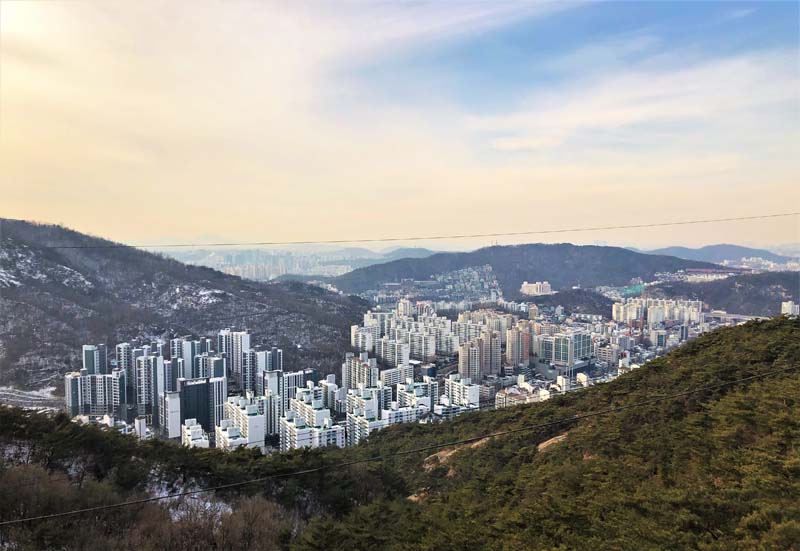

Figures 18–20 view of Seoul from Inwangsan Mountain
The Cultural City
In the early 2000s, however, a new type of urban development began in Seoul as South Korea sought to join the global economy following the Asian economic crisis of 1997. To promote Seoul as a global city and improve tourism, the government needed to reflect a new image of urban development that presented Seoul not as an industrial “hard” city but as a cultural “soft” city.13 The state’s focus shifted back to Gangbuk, or north of the river, after years of concentrated development in Gangnam. Gangbuk possessed what Gangnam lacked: a historical identity that was visible in what remains of the palaces of Joseon Dynasty and Bukchon, the area between the Gyeongbokgung and Changgyeonggung, where traditional Korean architecture was still extant, although mostly deteriorated.
After years of neglect during the industrialization fever of the past century, the government turned its attention to recover the history of Seoul in the remaking of Bukchon Village through the Bukchon Hanok Regeneration Project in 2000.14 A hanok is a traditional Korean single-story house made of wood structure, ondol—underfloor heating system—and tiled or thatched roof. To revive what remains of Korean vernacular architecture in Bukchon and turn it into a tourist hub, the government subsidized hanok owners to repair or rebuild their hanoks by providing grants and low-interest loans, a departure from the previous century’s policies that prevented the smallest changes to these buildings, which ultimately led to their dilapidation. The new preservation policies, however, led to even more destruction of original hanoks as owners were able to demolish and rebuild their residences to add another story or to entirely modernize them and switch their use to become a bar or a restaurant, for example.15 The Bukchon Hanok Village is one of the most touristy spots in Seoul, because it seemingly provides a glimpse into the history of the city but most of the hanoks that exist there are only a facsimile. Although, among a landscape of repetitive grey buildings, being in Bukchon or Ikseondong, another neighborhood that retains some hanoks, is a much more pleasant experience.
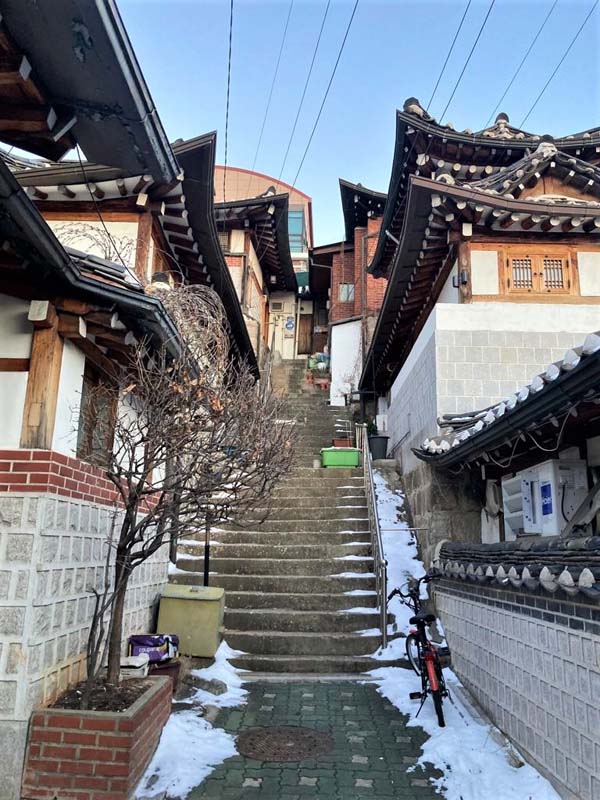
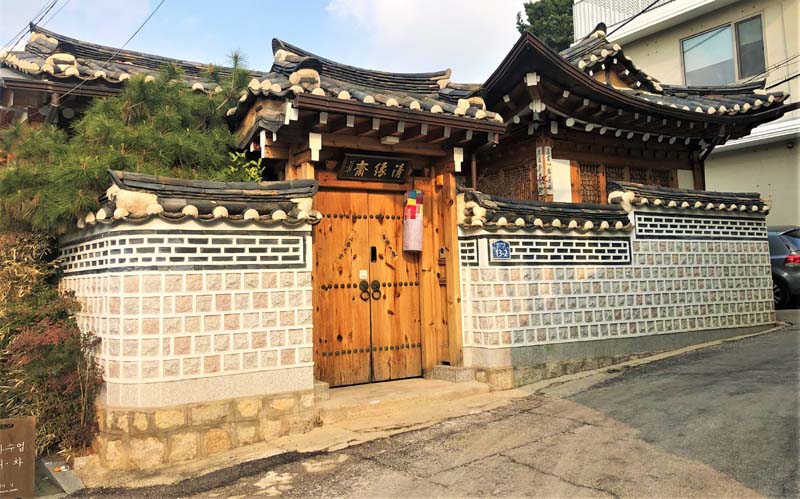


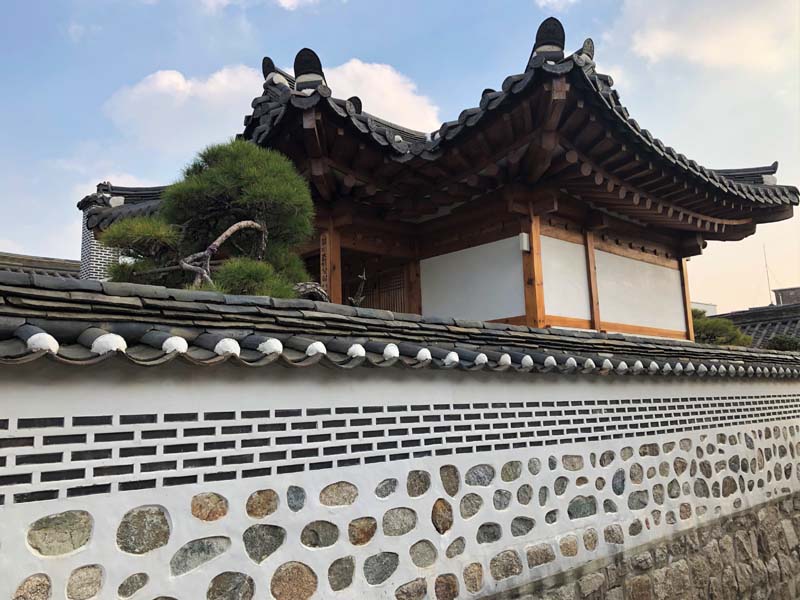
Figures 21–25 Bukchon Hanok Village
In addition to a revival of vernacular architecture to raise Seoul’s cultural profile, the state initiated several iconic mega-projects like the restoration of Cheonggye Stream and the construction of Dongdaemun Design Plaza by Zaha Hadid. Both projects were controversial for the fear of displacing local communities, shops, and markets that developed there over decades.16
Perhaps one of the most symbolic projects of the government’s effort to rebrand Seoul’s image is the restoration of Cheonggye Stream, which was covered with concrete and turned into a roadway in 1958. In 1976, an elevated highway was built on top of it and remained in use until the stream was restored in 2005. The project became central to Mayor Lee Myung-bak’s bid for election, for he promised to improve Seoul’s cityscape and revitalize its economy through major urban interventions that increase tourism.17 The project gained public support as it removed the elevated highway, a symbol of the developmental state’s urbanism, uncovered the drying stream underneath the concrete, and introduced a pedestrian recreational space in a very congested part of the city. While the project does create a unique urban experience that provides a much needed respite from the hustle of the city, environmentally it does little.18 It’s not a true stream. One scholar described it as a fountain where “running water is pumped up and sent flowing along the course. Moreover, because the bottom of the stream is made of concrete, and therefore nearly incapable of performing any purification functions, it stands to reason in some sense that the water would become progressively unclean.”19 Following the Cheonggye Stream eastward, one arrives at the alien-looking structure of Dongdaemun Design Plaza (DDP). The DPP was built after the destruction of Dongdaemun Stadium that stood there since 1925.The flea markets that were displaced from the Cheonggye restoration project had used the stadium as their new location until they were eliminated to build the iconic DDP.20

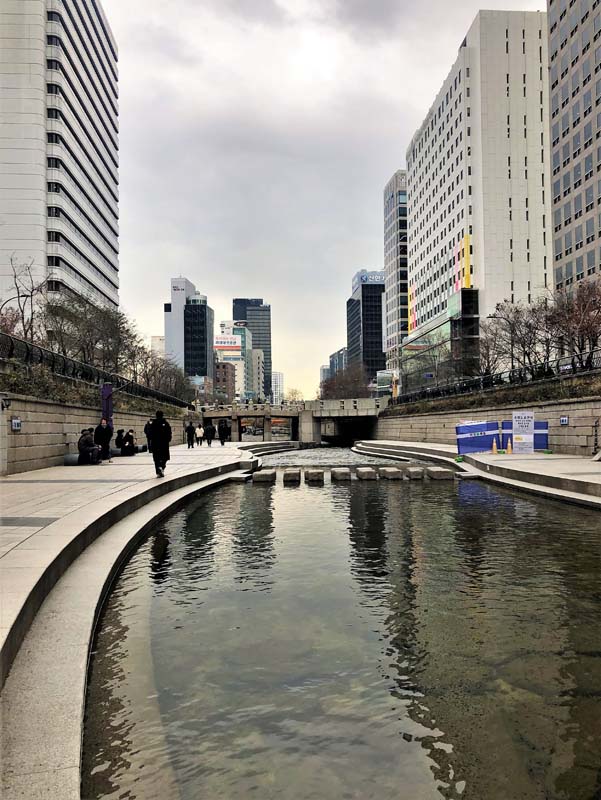


Figures 26–29 Chyeonggye Stream

Figure 30 Dongdaemun Design Plaza
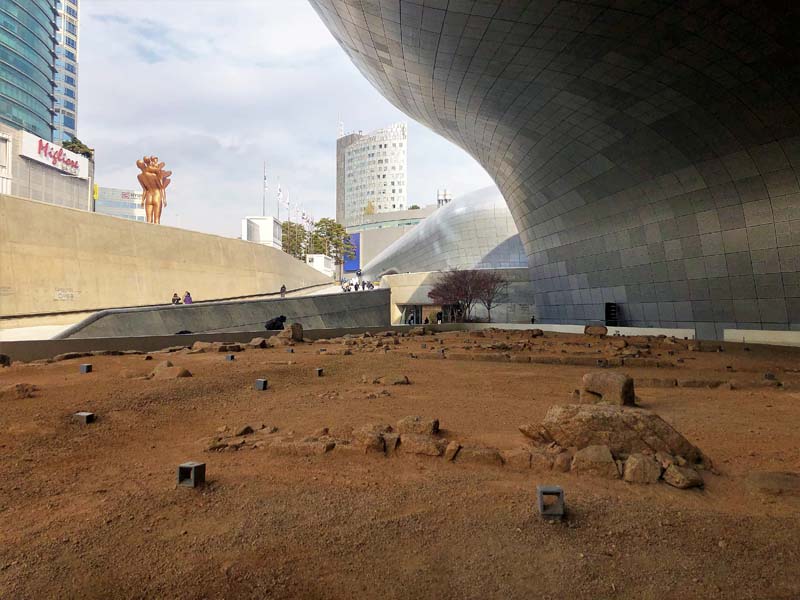
Figure 31 Dongdaemun Design Plaza with ruins of the old Dongdaemun Stadium
Seoul is Always Ready for Change
If we consider a successful postwar reconstruction a resumption of economic activity, return of displaced populations, physical recovery of infrastructure and transportation networks, then Seoul has all the markers of an effective reconstruction. Seoul’s remarkable rebirth as a global metropolis in a short time makes it hard to remember that it had ever experienced war in its recent history. There are not many reminders of the Korean War in Seoul, perhaps with the exception of the War Memorial of Korea. In many of the cities I’ve visited during the fellowship, the effects of war often still manifested as physical scars or memorials that expressed what story the city wanted to tell about its past, based on what was memorialized and by whom. Seoul is a special example in that its postwar narrative was always more concerned about its future rather than past. The prevalent description of Seoul as a city that had risen from the ashes or a “miracle on the Han River” limits the discussion of Seoul’s urban ecology after the Korean War to a parable of how a city overcame adversity and succeeded to become one of the richest economies in the world. This narrative was mainly born out of the heavy-handed government-controlled development of the first three decades after the war, where city-making was only a means to achieve economic goals. Efficiency and functionalism became the neutralizing brush that painted over Seoul’s urban landscape, producing neighborhoods of lookalike towers distinguished only by numbers, compromising in the process its cultural and historical identity.
However, Seoul’s commitment to modernize and reinvents itself began long before the Japanese occupation and the Korean War. The last king of the Joseon Dynasty, King Gojong, opened the country’s ports to trades in the late 19th century, which led to the introduction of new ideas and technologies. Western architectural styles that were popular in Japanese cities then began to emerge in Seoul, like in the King’s own Seokjojeon Hall, built in a Neo-Renaissance style, which stands side by side with vernacular Korean structures in Deoksugung Palace. While most of Seoul’s modernization occurred under the control of imperial Japan and the authoritarian regime after the war, a drive for innovation had always been part of its history.

Figure 32 Seokjojeon Hall, built in 1910

Figure 33 Deoksugung Palace buildings
Even to the detriment of its architectural heritage, what makes Seoul a unique city is its willingness to change and experiment in city-making, whether it is converting an old railway line into the dynamic Gyeongui Line Forest Park to add more public space or to turn metro stations into art galleries as in the Ui-Sinseol subway line. For a visitor, it might be hard to distinguish one street lined with towers and department stores from another, but once you veer off the big thoroughfares and turn into a side street or an alley, Seoul’s rich spirit unfolds in a dynamic unpredictability of scenes, eclectic street facades, and a strong social life that populate its cafes, restaurants, and food markets at any time in the day and night.



Figure 34–36 Gyeongui Line Forest Park
Perhaps a concrete jungle is not the urban image Seoul wants for itself, but its post-war model of development became a distinctly South Korean expertise that the country exports to other war-torn societies in the world to aid in their reconstruction. In my own home city of Baghdad, the Korean construction conglomerate Hanwha leads the first and largest urban development of Bismayah New City, a planned community that consists of apartment towers, schools, hospitals, and other public facilities. Bismayah is the first of its kind in Baghdad’s low-rise sprawling urbanism but now the city is seeing a multiplication of this form of development as more gated and planned communities rise up in its skyline. South Korean officials are already meeting with the Ukrainian government to discuss post-war reconstruction and city planning of destroyed Ukrainian cities. Planning post-war cities has become an essential block of the South Korean economy.
2 Yun, Jieheerah. Globalizing Seoul: The City's Cultural and Urban Change. Abingdon, Oxfordshire: Routledge, Taylor & Francis Group, 2018.
3 Ibid.
4 Kal, Hong. “Seoul Spectacle The City Hall, the Plaza and the Public.” City Halls and Civic Materialism: Towards a Global History of Urban Public Space, 2014.
5 Yun, Jieheerah. Globalizing Seoul: The City's Cultural and Urban Change. Abingdon, Oxfordshire: Routledge, Taylor & Francis Group, 2018.
6 Douglass, Mike. “Creative Communities and the Cultural Economy — Insadong, Chaebol Urbanism and the Local State in Seoul.” Cities 56 (2016): 148–55. doi:10.1016/J.CITIES.2015.09.007.
7 Ibid.
8 Jung, Inha. Architecture and Urbanism in Modern Korea. Honolulu: University of Hawaii Press, 2014.
9 Yun, Jieheerah. Globalizing Seoul: The City's Cultural and Urban Change. Abingdon, Oxfordshire: Routledge, Taylor & Francis Group, 2018.
10 Ibid.
11 Jung, Inha. Architecture and Urbanism in Modern Korea. Honolulu: University of Hawaii Press, 2014.
12 Douglass, Mike. “Creative Communities and the Cultural Economy — Insadong, Chaebol Urbanism and the Local State in Seoul.” Cities 56 (2016): 148–55. doi:10.1016/J.CITIES.2015.09.007.
13 Yun, Jieheerah. Globalizing Seoul: The City's Cultural and Urban Change. Abingdon, Oxfordshire: Routledge, Taylor & Francis Group, 2018.
14 Ibid.
15 Ibid.
16 Jung, Inha. Architecture and Urbanism in Modern Korea. Honolulu: University of Hawaii Press, 2014.
17 Ibid.
18 Marshall, Colin. “Story of Cities #50: the Reclaimed Stream Bringing Life to the Heart of Seoul.” The Gaurdian, May 25, 2016.
19 Ibid.
20 Ibid.



Leave a commentOrder by
Newest on top Oldest on top